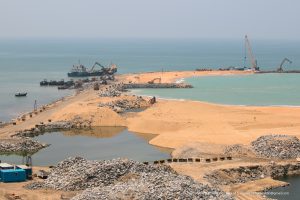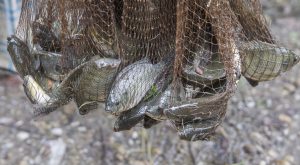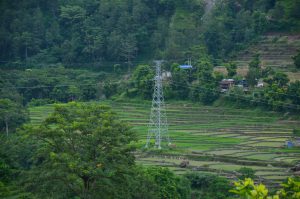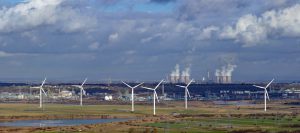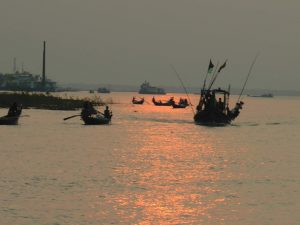The Norwegian Polar Institute (NPI) is Norway’s premier government institution conducting research on the Arctic and Antarctic. It has been the main research institution with which the Indian National Centre for Polar and Ocean Research (NCPOR) has cooperated over the last decade. One of the key areas is the four year (2016-2020) mass balance, dynamics, and climate of the central Dronning Maud Land coast, East Antarctica (MADICE) project, where the two countries have combined their expertise to form a fruitful research partnership.
Nalan Koc, Research Director of NPI, was one of the participants at the recent conference at NCPOR, organised in coordination with the Norwegian Embassy and the European Union. She spoke to the thethirdpole.net on how India and Norway had become partners in polar science, and why the cooperation has worked so well, as well as the challenges in the future.
![Nalan Koc, Research Director at the Norwegian Polar Institute [image courtesy: NPI]](https://dialogue.earth/content/uploads/2018/11/Nalan_Kox.jpg)
Nalan Koc (NC): This started with India setting up its research base Himadri at the Ny-Alesund Research Station in Svalbard in Norway in 2008. In 2009 I became the first head of its Ice Centre. The Norwegian government wanted to share our knowledge of the polar regions with other countries, and so it was in our interest to cooperate with India in its research.
OA: Why was it in Norway’s interest?
NC: You have to understand that the Arctic is a key part of the Norwegian identity. It shapes much of who we are, from our shipping to our resources, to our research. We had a certain competence in the subject, and also we were curious about the Himalayas. Nobody had much of an idea what was happening there, the region with the most glaciers after the polar regions. It is vast, complex, and in many ways unexplored. It made sense for us to cooperate.

OA: Is there a specific example you would like to cite?
NC: In 2013-14 we were discussing how we could get more Indians researching in Norway, and Shailesh Nayak who was then Secretary of the Ministry of Earth Sciences (2008-2015) in India, was happy to support the idea. The ministry released funds for two PhD students to come study the Arctic and the Antarctic with us at NPI. We are looking forward to a second batch of researchers coming soon.
See: An Indian scientist in the Arctic
See: Studying the South Pole from the North Pole
OA: Is the Arctic suddenly becoming the centre of world research and geopolitics, with the ice melting and access to minerals and oil?
NC: Certainly the huge amount of sea ice melting has generated a lot of interest. President Obama was very focussed on the issue when the US was the chair of the Arctic Council (2015-17). There are major environmental concerns, from the release of methane from melting permafrost to changes in biodiversity in the region. There are also possible opportunities for shipping, with Maersk, the biggest shipping container company, sending its first container ship across the Arctic this year.
That said, I cannot comment on the oil and gas that is being talked about. That is research that was done by the US Geological Survey, and I have not had access to that data. I do not know of the mineral wealth of the region, and it may just be a best guess. I just attended the Global Maritime Conference, and it did not seem to me that anybody was planning for this as yet.
OA: How critical is the change in the ice, and how will it affect the rest of us?
NC: Summer sea ice in the Arctic has declined by 40-50% in the last few decades. It is already affecting the jet streams, as the open ocean is heating the atmosphere and reducing the temperature gradient between the middle- and high-latitudes. The latest Snow, Water, Ice, Permafrost in the Arctic (SWIPA) report is truly striking. It suggests that by the end of the 2030s, there may be summers when the Arctic is totally ice free. We have little idea of what that may mean for the circulation of both the atmosphere and the oceans and how it will affect the monsoons in South Asia.
There is no analogue for this. We do not have examples in history of how this type of change affected the world, and the last time the earth was so warm was tens of millions of years ago. Scientists are studying the changes, but we have largely been chasing this problem from behind because we have not experienced any such thing. This is changing as more countries are becoming concerned and doing research. We have to collaborate if we want to get ahead of the problems.
OA: India is not the only player in this; the Chinese have been investing heavily in polar research, how is your cooperation with them?
NC: The Polar Research Institute of China (PRIC) is also doing research at the Ny-Alesund Research Station, and have done so since 2004. They are contributing to a wide range of research within natural sciences, and we also collaborate with them, especially within monitoring of mass balance of glaciers. Recently, we have started working together on the topic of microplastic in the marine environment. Previously, we have had collaborative projects on sea ice and the effects of black carbon on snow, establishing measuring stations in China, and also in Svalbard and Tromso in Norway.
OA: Are they also interested in the monsoon, since they also have one?
NC: Changes in the Arctic are also affecting the East Asian monsoon system, and therefore China is interested in understanding the changes taking place in the Arctic. They are concerned with issues such as the development of the Arctic sea ice, and the ecosystem.
![<p>The sea ice and mountains in Spitsbergen, Svalbard during the Arctic summer [Image by: Josh Harrison/Alamy]</p>](https://dialogue.earth/content/uploads/2018/11/arctic-summer-sea-ice-scaled.jpg)


